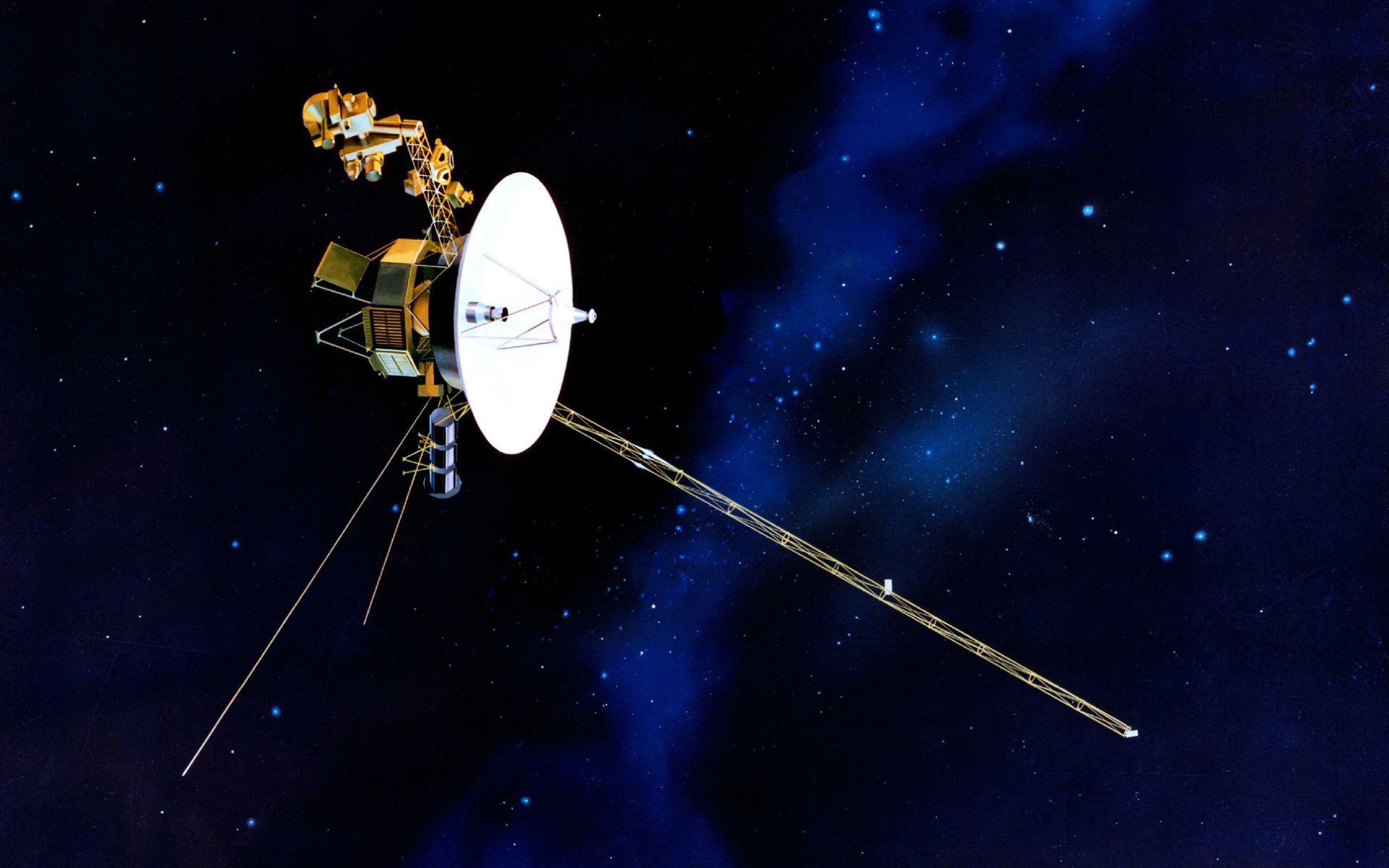Each week TecMundo and #AstroMiniBR bring together some of the relevant astronomical curiosities produced by the team’s collaborators. Twitter profile To share the fantastic universe of astronomy with you. Check out!
#1: Voyager 1 is sending confusing signals to Earth!
twin probes Voyager 1 and Voyager 2 are NASA’s oldest missions still in operation. These rockets, launched into space in 1977, are the only probes in history to leave the Solar System and go into interstellar space.
Originally launched to study Jupiter and Saturn, the probes were expected to last only five years, but after making a series of revolutionary discoveries, NASA expanded both missions to the farthest reaches of our star system.
But this week, the US space agency reported that Voyager 1 experienced a malfunction that caused it to send repetitive and meaningless ones and zeros to Earth. The spacecraft is still capable of receiving and executing commands sent to it, but it is not capable of transmitting scientific or engineering data.
After eliminating other possibilities Voyager team determined that problems on the spacecraft were caused by one of three computersIt is called flight data system (FDS). Last week, engineers tried restarting FDS to see if that could fix the problem, but the probe still wasn’t returning usable data.
#2: Geminid meteor shower in Brazilian skies!
Rain Geminid meteors or Geminids are an impressive celestial show It takes place every year in mid-December, usually between the 7th and 17th.
This meteor shower originating from asteroid 3200 Phaeton is considered the top event in its category and is unique for several reasons: Unlike most meteor showers of comet origin, The Geminids emerge from debris released by the asteroid approaching So.l, resulting in particularly bright and colorful meteors cutting across Earth’s night sky.
The name Geminids comes from the Gemini constellation, because the radiant point, that is, the region of the sky where meteors originate, is located close to this constellation. The Geminids have increased in intensity in recent years, producing up to 120 meteors per hour at the peak of their activity, which took place on the night of December 15 this year.
Recordings of this spectacular event were made by Pico dos Dias and the Céu Profundo Observatory team and are shown in the images above!
#3: The first parts of the ELT mirror are on the way!
The Extremely Large Telescope (ELT) represents an unprecedented technological and scientific achievement in the field of astronomy. As its name clearly suggests, this gigantic telescope is the largest of its kind. Designed to collect light spectacularly and deliver an unprecedented view of the Cosmos.
Currently under construction in the Atacama Desert in Chile, the ELT will be equipped with an extremely large primary mirror with a diameter of approximately 39 meters. This massive size will allow the ELT to capture and analyze light from distant stars and galaxies with unprecedented resolution, enabling significant advances in various fields of astronomy.
In addition to its impressive size, the ELT is equipped with the most advanced technologies currently available, such as its adaptive optics system that corrects distortions caused by the Earth’s atmosphere in real time. This will enable astronomical images to have a high level of clarity, even of objects deep within the universe.
The ELT is expected to play a key role in future astronomical discoveries and will complement many other state-of-the-art telescopes and observatories planned for decades to come!
Did you like the content? So, always stay up to date with astronomy curiosities at TecMundo!
Source: Tec Mundo
I’m Blaine Morgan, an experienced journalist and writer with over 8 years of experience in the tech industry. My expertise lies in writing about technology news and trends, covering everything from cutting-edge gadgets to emerging software developments. I’ve written for several leading publications including Gadget Onus where I am an author.













